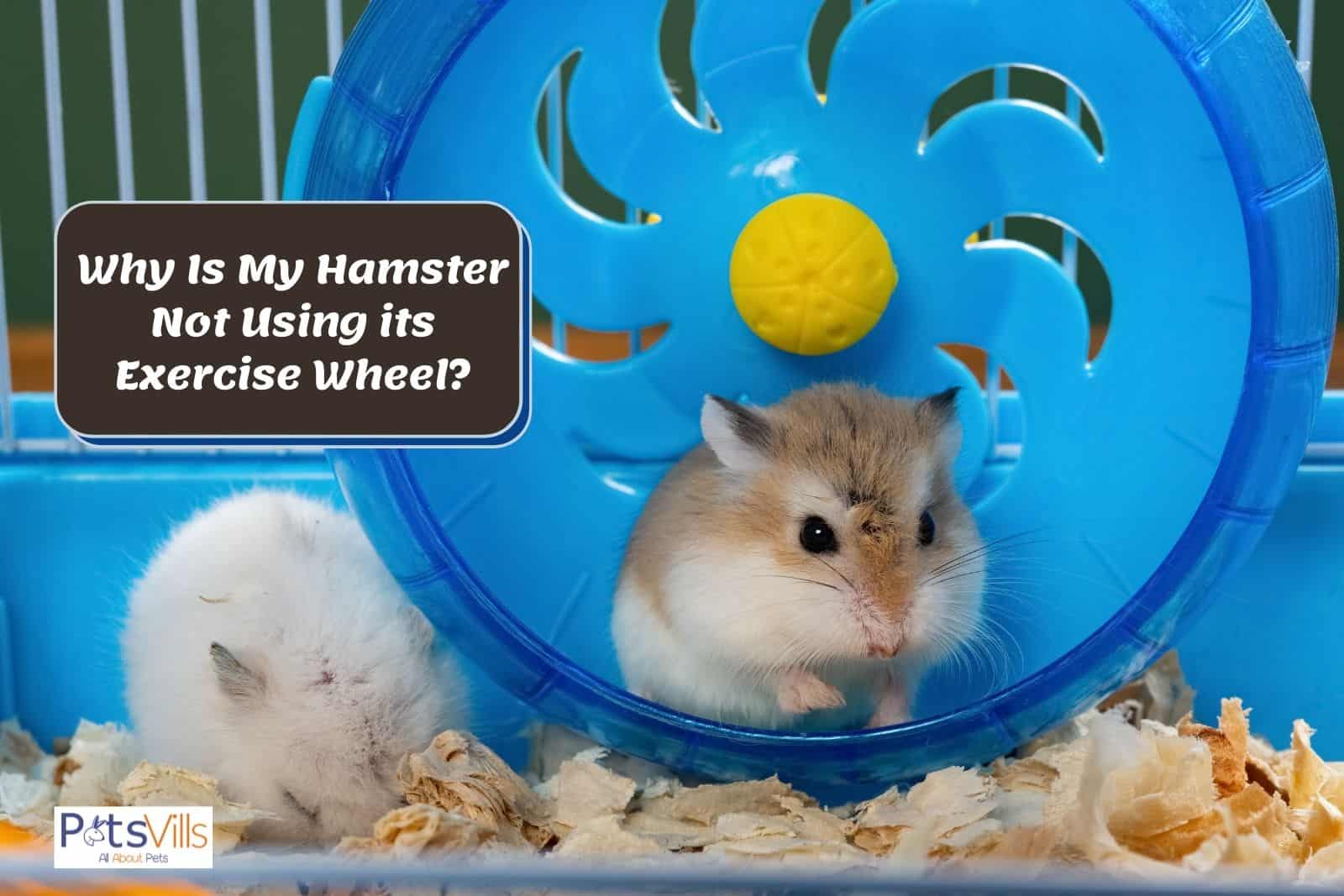Hamsters love running on their wheels for long periods.
That’s why it can be concerning when your hamster stops using its wheel.
It can make you wonder, why is my hamster not running on the wheel?
There are various reasons for that, such as your pet is sick, injured, or bored, or the wheel is the wrong size.
No matter the cause, the rest of this article will help you get to the root of the problem (and help you fix it).
This post contains affiliate links. We
earn a commission if you make a purchase
at no extra cost to you.
READ MORE: Why Do Hamsters Run on Wheels?
Table of Contents
Why is My Hamster Not Using its Wheel?
There are several reasons why your hamster is not using its wheel, many of which you can fix. Let’s take a closure look at each of them!
#1 The Wheel Might Not Be the Right Size
All hamsters are not created equal… at least when it comes to size.
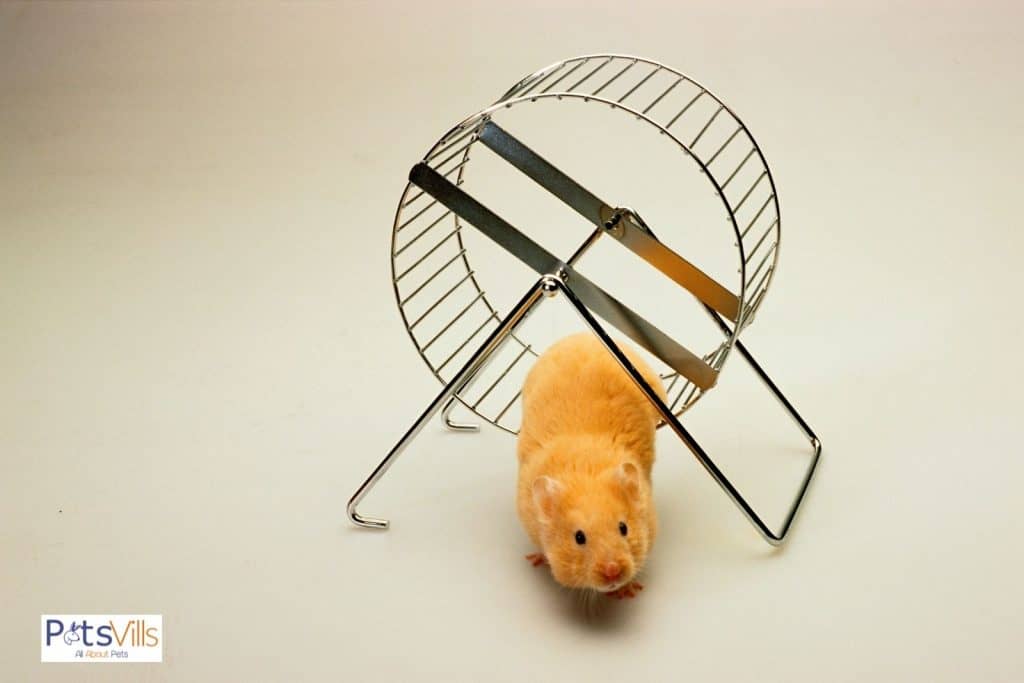
You need to make sure your wheel is the right size for your hamster. If the wheel is too big for your hamster, it will have a hard time pushing the wheel around.
On the flip side, if the wheel is too small for your hamster, it will force your hamster to curve its back while running, which can cause pain and spinal problems.
The size of your hamster usually depends on the species of your hamster.
If you have a larger Syrian hamster (also known as a Golden hamster), you’ll need a bigger wheel. I recommend a wheel at least 8 inches in diameter. If you’ve got a particularly large hamster, you may even need to go bigger than that.
If you have a smaller Dwarf hamster, you’ll need a much smaller wheel. A wheel with a diameter between 4.5 and 6.5 inches should work for most Dwarf hamsters.
Most adult hamsters will be fine with a wheel in the middle of these two extremes. The 6.5-inch diameter hamster wheel is the most common choice for the average hamster, and will likely be usable even by adult Dwarf hamsters.
Thesprucepets has a great article on choosing the correct wheel for your hamster. It covers the right size wheels that have ASPCA approved as well as alternatives toys for your hamster.
If you have a hamster of small or average size, I recommend the Silent Spinner Wheel from Kaytee It’s a sturdy, silent wheel with a solid bottom, and comes in both 4.5 inch and 6.5-inch sizes.
If you have a larger hamster, I recommend the Large Comfort Exercise Wheel, also from Kaytee. The 8.5-inch diameter should accommodate even the biggest of hamsters.
Check: Our Top 6 Picks for the Best Hamster Wheel
#2 The Wheel Might Be Jammed
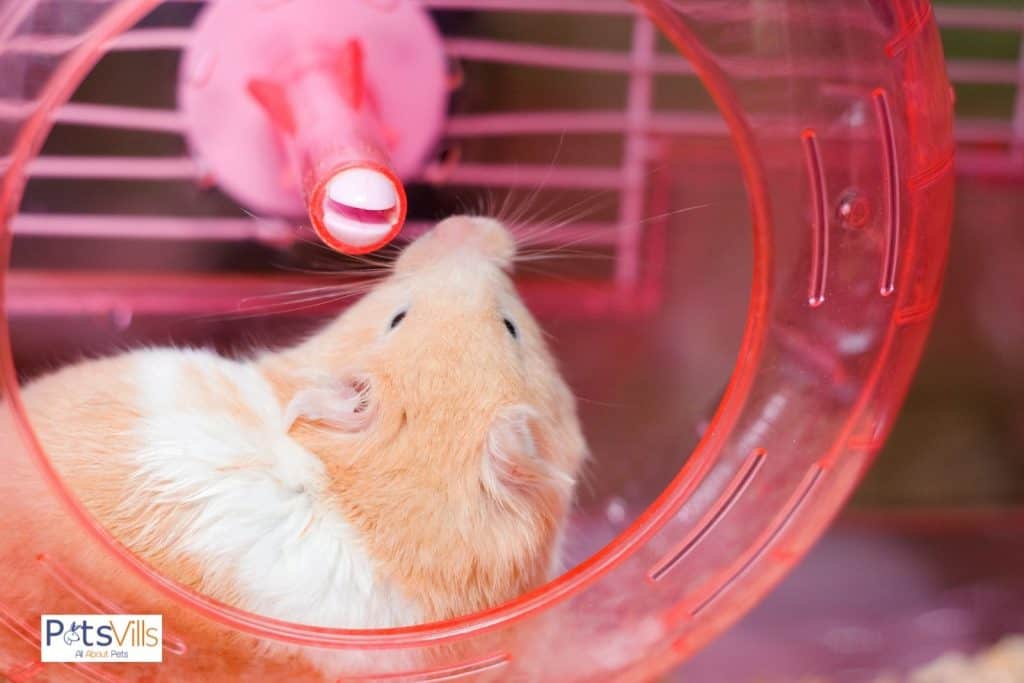
The first possibility is that the wheel is jammed. This problem is particularly prevalent amongst the silent spinner wheels that are common with owners who don’t want to be bothered by constant wheel squeaking.
If you have one of these silent spinner wheels, take it out of the cage and see if spins easily. If it’s stiff and takes considerable effort to move it, you should consider buying a new wheel.
If you’re in need of a new wheel, I recommend the Niteangel Super Silent.
#3 Your Hamster Might Be Injured or Ill
The next possibility is that your hamster is injured or sick. If that’s the case, it’s understandable why they don’t want to run on their wheel.
I’ve been sick or injured quite a few times in my life, and I could barely work up the energy to get out of bed. The prospect of running on a stationary wheel would have probably made me pass out.
Here are some signs that your hamster is sick:
- Dull, spotty, or abnormally wet fur
- Runny nose
- Discharge coming out of eyes
- Eyes dull and sunken instead of lively
- Wet tail
- Lethargic behavior, not moving much
- Disinterest in food or water
And here are some signs your hamster is injured:
- Avoiding putting weight on a leg
- Constant squeaking when walking
- Bloodstains on the bedding and around the cage
- Cuts or scrapes on the hamster’s body. This is of particular concern if your hamster lives with other hamsters.
If you notice any of these signs, you should consider taking your hamster to the vet. It’s tough to diagnose what the actual problem is yourself. It’s best left to a trained professional.
#4 Your Hamster Might Be Bored of the Wheel
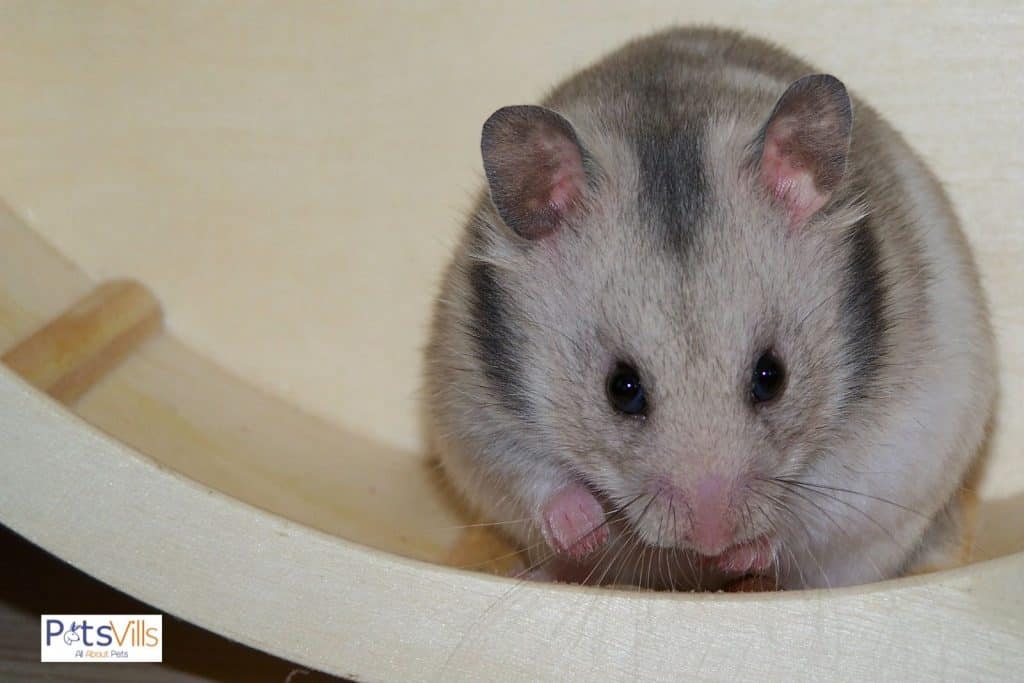
Some hamsters just get bored of their wheels over time. If the hamster has ample cage space, they might find that they prefer running around in the open to running on a stationary wheel.
Spend some time observing your hamster and see if it’s active while it isn’t on the wheel.
If your hamster is running around and seems to be getting consistent exercise, then there’s no need to worry. Just leave the wheel in place, your hamster may go back to wheel-running eventually.
#5 The Wheel Might Be Causing Your Hamster Pain
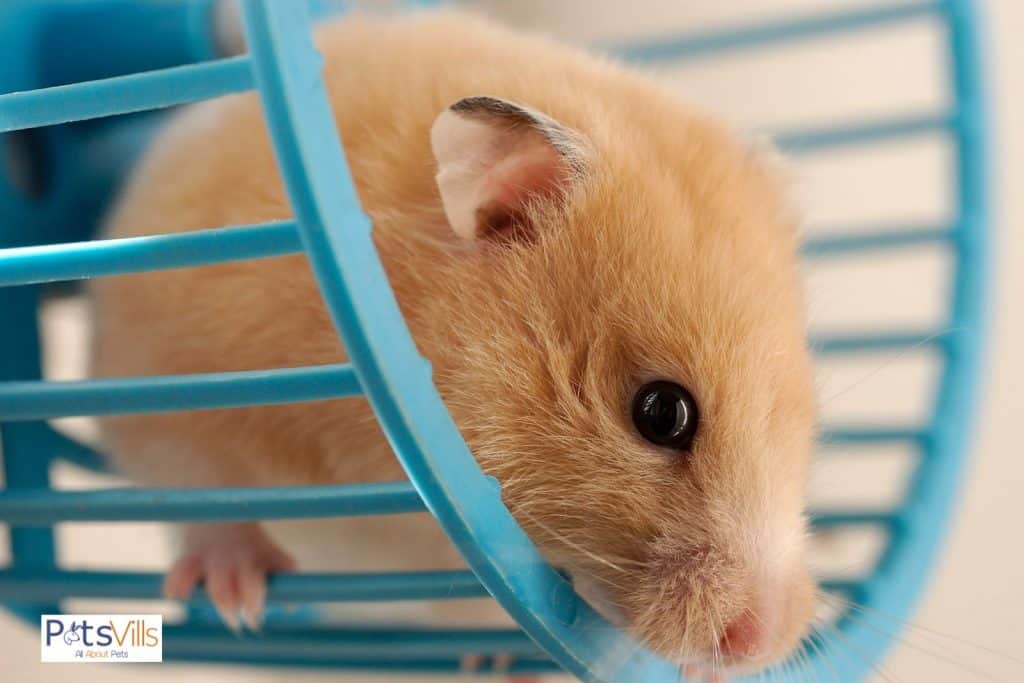
While all hamster wheels are advertised as usable by hamsters, some wheels are actually not suitable for the little furballs.
If your wheel has a wire mesh bottom, it’s pretty easy for your hamster to lose its footing and slip its foot through the gaps between the wire.
This can be painful and scary for the hamster, and it might be avoiding using the wheel for fear of it happening again.
Get a safe hamster wheel with a solid bottom to fix this problem. Dr. Robert Ness of the Ness Exotic Wellness Center advises making the wheel safer by adding bedding or masking tape. (3)
He also advises getting a plastic wheel since it is safer than open-wire wheels to ensure your hamster doesn’t get wounds running on the wheel.
Your hamster shouldn’t be scared of using the wheel due to unfortunate falls or slips. If it knows it won’t slip while running at full speed, it will run more and more kilometers.
#6 The Wheel is Damaged or Has no Grip
A damaged wheel will discourage your pet from running on it. Imagine the pet getting onto the wheel but seeing no movement or even falling over when it tries to run on the wheel. How frustrating could that be?
Hamsters are pretty intelligent and will thus know when the wheel has a problem. They won’t want to continue using the wheel if they feel it has some damage.
As you can see from the above video, fixing the grip is easy. But if the wheel is broken, it might take a long time to resolve the issue.
Some broken wheel issues you can easily fix yourself. For the complicated ones, however, you will need to get someone with the technical know-how.
#7 You Might Not Be Noticing Your Hamster Using The Wheel
It’s possible that your hamster is using the wheel… you’re just not around to see it. Spend a bit more time observing your hamster before determining it actually isn’t using its wheel.
You can also leave a video camera trained on your hamster’s cage for a day and check whether it’s running on the wheel when you’re not around.
Watch this video for additional information:
#8 An Unsuitable Wheel Design
You can have the best wheel with the perfect size for your hamster. But then, if the wheel’s design is unsuitable for your pet, it won’t enjoy running on it as much as it would want.
Flying saucer wheels are a culprit in that regard. They have a poor design that could see a hamster flying off the wheel (4).
if your hamster keeps having epic fails on their wheel, it will discourage them from using it. They can start only running around in their enclosure rather than on the wheel.
#9 Poor Nutrition
According to Dr. Ness, hamster nutritional requirements are challenging to replicate in captivity. Therefore it is easy to find an owner feeding their hamster an unbalanced diet. (3)
Poor nutrition might lead to the hamster not having enough energy to run around their cage and thus their wheel. A poor diet directly translates to less energy available for the hamster.
The pet would thus tend to avoid activities that require it to expend lots of energy, of which running is one of them. It is recommended to check with an exotic pet vet on the ideal diet for your hamster.
A balanced diet could be all it takes to get your hamster active on their spinning wheel all over again.
#10 The Hamster is Growing too Old to Excercise on a Wheel
Hamsters typically have short lifespans. (5) By the time a hamster is about two years old, it will have started descending into old age. An aging hamster wouldn’t have the same activity levels as its younger counterparts.
That’s down to the energy levels dropping. At that stage, the hamster prefers to sleep or laze around with minimal activity.
You must have seen this with humans as they age. Therefore older hamsters will reduce the use of the running wheel.
So when you see that your hamster has stopped running on its wheel, think about its age. How old is your hamster?
If you’ve had them long enough, they could be entering old age and prefer to relax instead of running on the wheel.
Therefore it shouldn’t be something that concerns you too much.
Also Check: The Best Hamster Toys And Accessories
FAQs
Do hamsters need exercise wheels?
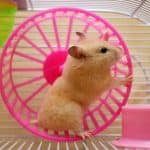
No, they don’t need a wheel as long as your hamster is getting enough exercise. It’s recommended that you buy your hamster a wheel as most hamsters really enjoy using them.
Can my hamster overexert itself on the wheel?
It’s possible but unlikely. Like most animals, hamsters know their breaking point. They’ll probably lay down and take a nap long before they come close to overexerting themselves.
What happens if hamsters don’t exercise?

If your hamster isn’t exercising it could lead to obesity. Check to see if your hamster is ill. Usually, hamsters will get bored if they don’t exercise.
How long do hamsters run on their wheel?
Some pet hamsters can run on their running wheel for as much as five miles a night! (1)
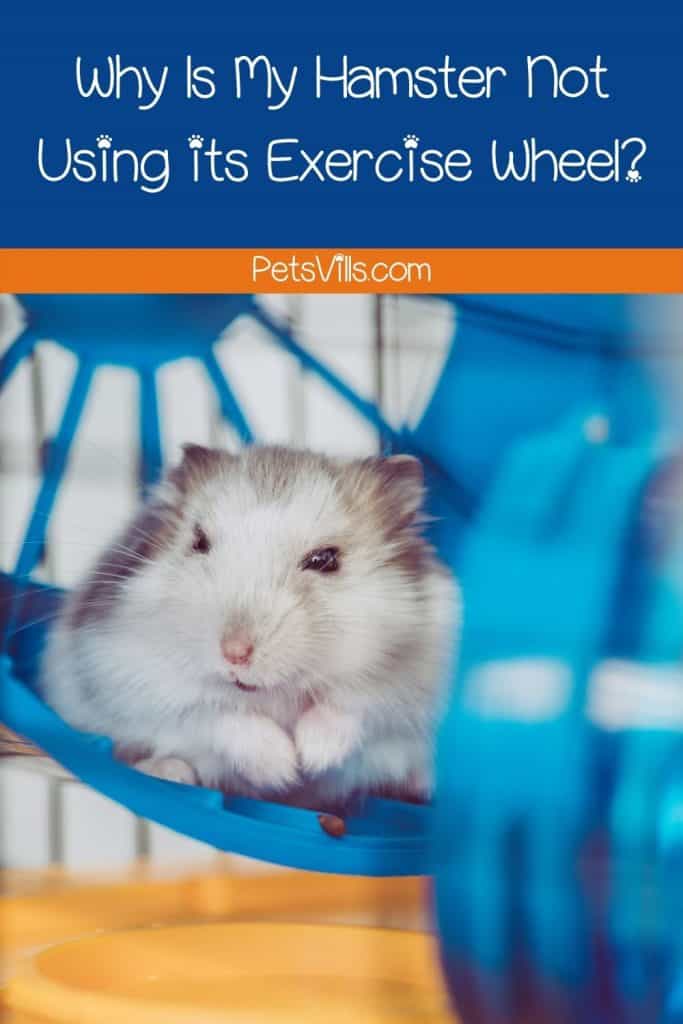
Have you seen your hamster not running on his wheels? What did you do? Let us know in the comments section!
Resources
- 1. The Five Most Popular Hamster Breeds [Internet]. www.petmd.com. Available from: https://www.petmd.com/exotic/evr_ex_hm_five-most-popular-hamster-breeds
- 2. Routine Health Care of Hamsters – All Other Pets [Internet]. MSD Veterinary Manual. Available from: https://www.msdvetmanual.com/all-other-pets/hamsters/routine-health-care-of-hamsters
- 3. CARE OF HAMSTERS [Internet]. Available from: http://www.nessexotic.com/docs/Hamsters.pdf
- 4. The best hamster wheel [Internet]. Chicago Tribune. [cited 2022 Jul 5]. Available from: https://www.chicagotribune.com/consumer-reviews/sns-bestreviews-pets-best-hamster-wheel-20220502-4oc7slgm6vacvdj3xnt5swyqfq-story.html
- 5. Paul Pion DVM, Spadafori G. Veterinary Partner. VINcom [Internet]. 2017 [cited 2022 Jul 5]; Available from: https://veterinarypartner.vin.com/default.aspx?pid=19239&catId=102922&id=4951547
Alina Hartley is a small-town girl with a ginormous love of bearded dragons. It all started with Winchester, a baby bearded who was abandoned at the shelter by his former owners because of a birth defect that caused one front leg to be shorter than the other. Alina originally went to the shelter looking for a guinea pig, but one look at Winchester and it was love at first sight. From that day on, Alina has dedicated her life to learning everything she can about bearded dragons. She loves helping new beardie parents start their incredible journey with these magnificent reptiles.
Follow her on:
LINKEDIN
TWITTER.
Read her latest articles HERE
Learn more about her HERE.

